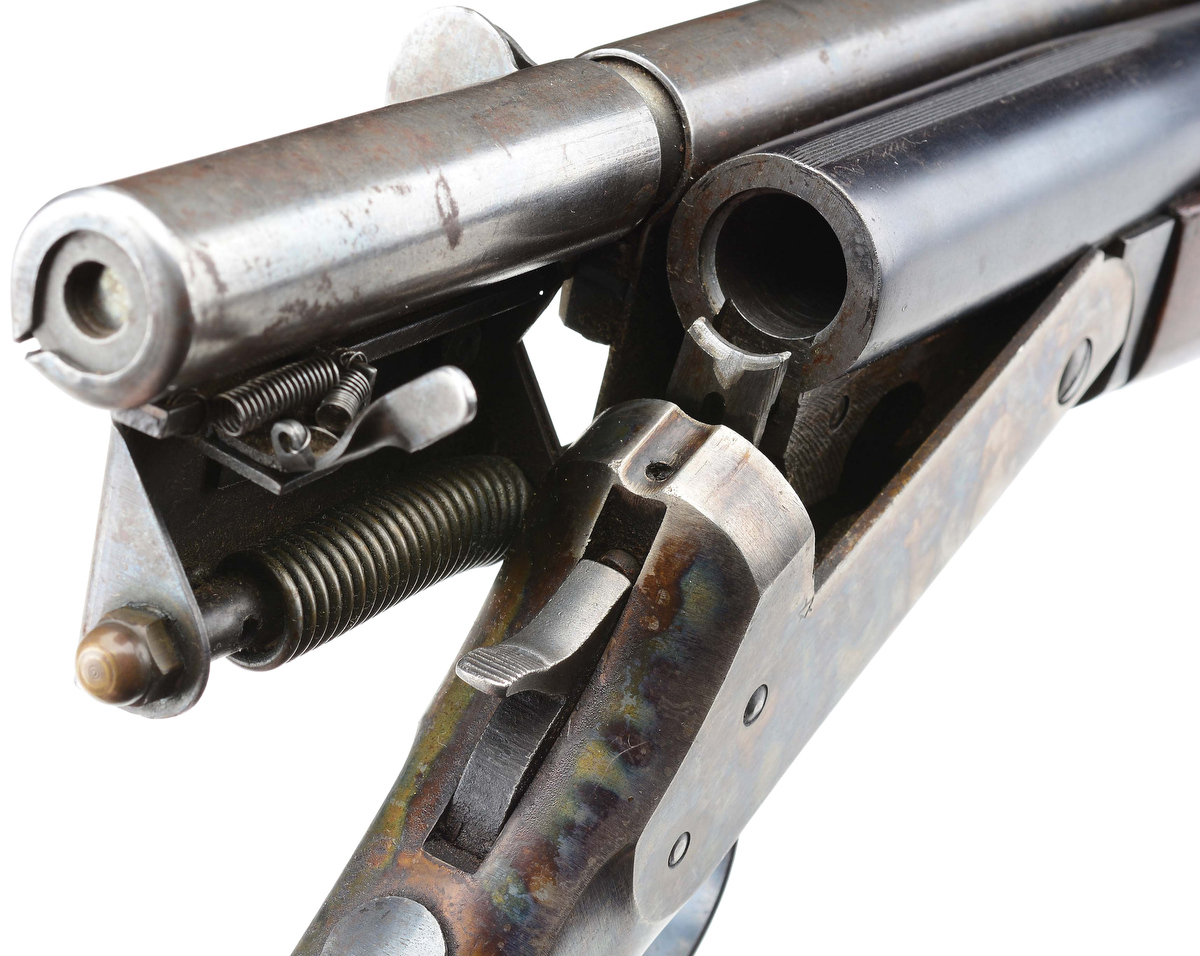By Anthony G. Williams
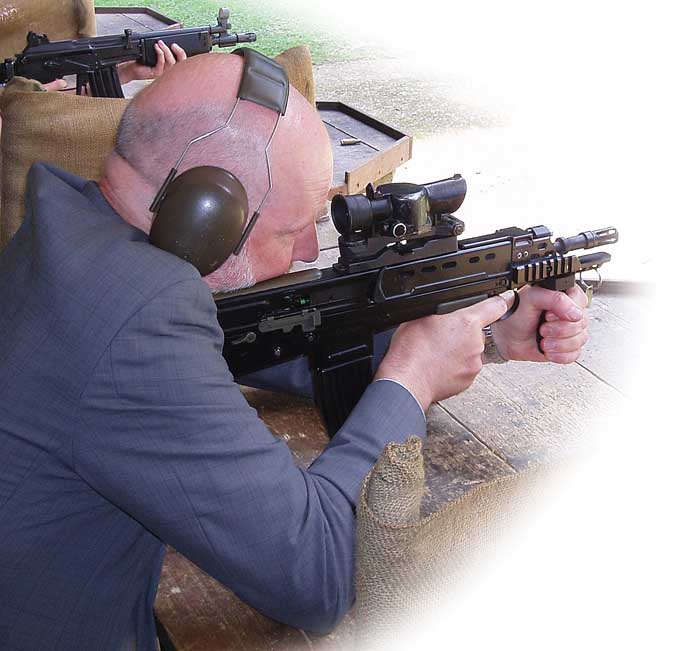
There has long been a requirement for a personal defence weapon, or PDW, for soldiers whose primary duty does not involve carrying a rifle. They need something much smaller, lighter and handier which does not burden them or distract them from their main task. Originally, the main priority was for officers, who were almost invariably given revolvers or pistols; but handguns also found a place with cavalry and, later on, with soldiers such as gunners who might come under infantry attack or with tank crews whose space was at a minimum.
The Second World War saw extensive use of submachine guns chambered for pistol ammunition in both offensive and defensive roles, although they were not primarily intended as PDWs. While shorter than a rifle, they were often almost as heavy and troublesome to carry. A commendable effort to find a better solution was made by the US Army, resulting in the adoption of the light and handy .30 M1 Carbine chambered for a much smaller and less powerful cartridge than the M1 Garand rifle. This was so successful that it was often used in more offensive roles than originally intended, especially in its selective-fire M2 version, leading to some criticisms of the effectiveness of its ammunition. However, neither SMGs nor the Carbine replaced pistols, which remained in service alongside them.
A major change came with the adoption of small arms chambered for small-caliber high-velocity ammunition, the first and by far the most common cartridge being the 5.56×45. Its adoption by the USA in the 1960s, and by the rest of NATO in the 1980s, largely killed off the military use of both the .30 Carbine and most SMGs. Rifles and especially carbines in 5.56mm were lighter and handier than traditional SMGs while being a lot more effective. They even replaced pistols to a great extent in many armies, although the US Army has remained an exception.

While the standard NATO pistol/SMG cartridge has always been the 9×19, also known as the Parabellum or Luger, early experiments were also made with small-caliber compact cartridges. Among the many tried from the 1950s to the 1970s, three are particularly notable: the .22 APG, Colt .22 Scamp, and Colt .221 IMP.
The .22 APG (Aberdeen Proving Ground) was an M2 Carbine rechambered for a new 5.56×33 cartridge. This round was not a necked-down .30 Carbine but was based on a wider case, and it fired a 41-grain bullet at around 3,100 fps. This was only for comparative test purposes as a part of Project SALVO in the 1950s, but the other two were serious attempts at producing different kinds of personal defence weapons at the end of the 1960s.
The Colt .22 Scamp (Small Caliber Machine Pistol) was chambered for a 5.56×29 cartridge which fired a 40-grain bullet at 2,100 fps. The gun was basically a big pistol, gas-piston operated and with a plastic receiver to minimize weight, and was marketed, without success, as a .45 M1911 replacement. It could fire semi-auto or three-shot bursts at a cyclic rate of 1,500 rpm.
The Colt .221 IMP (Individual Multi-Purpose weapon) was initially chambered for an existing commercial cartridge, the .221 Remington Fireball designed for the big, bolt-action XP-100 pistol, and fired a 52-grain bullet at 2,500 fps. The ultimate version was intended to use a .17 cartridge firing a 25-grain bullet at 3,000 fps. It was developed at the request of the USAF who wanted a survival weapon, and was subsequently designated GUU-4/P. The gun had a most unusual layout; it was a bullpup without provision for a forward handgrip, the pistol grip being located close to the muzzle. The shooter was expected to steady the weapon by holding the receiver against his forearm with his non-firing hand, which led to the nickname “arm gun”. Like the Scamp, this made no progress although the layout was adopted for the 5.56mm Bushmaster Armpistol.
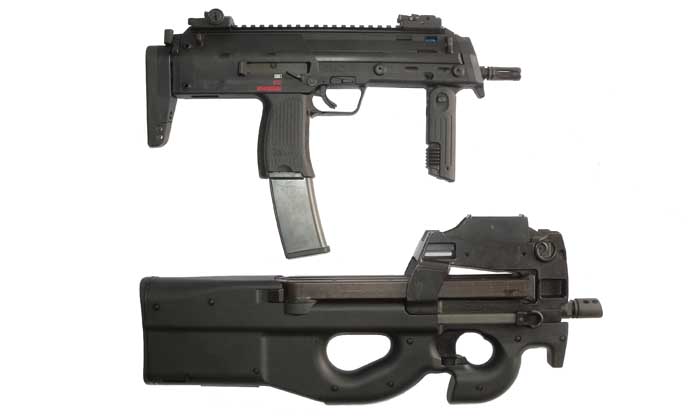
During the early 1990s, NATO became concerned that potential enemies were starting to issue body armor to their troops, which the 9mm ball rounds were unable to penetrate. As a result, a competition was arranged for a replacement for the 9mm which would have to penetrate a specified level of body armor (named the CRISAT target for the Collaborative Research Into Small Arms Technology project), defined as a 1.6mm titanium plate and 20 layers of Kevlar, while retaining sufficient energy to incapacitate the man wearing the armor, out to a range of 150 metres. Two different weapons were envisaged for this ammunition; a short-range (50 m) PDW weighing less than 1 kg (effectively a pistol) and a medium-range (150 m) close defence weapon weighing less than 3 kg (a compact SMG).
The penetration requirement forced the adoption of a small-caliber cartridge firing a high-velocity steel-cored bullet. The first contender was FN’s 5.7×28 round, as chambered in the P90 SMG and subsequently the Five-seveN pistol. The standard SS190 ball uses a 31-grain bullet fired at 2,350 fps (from the P90). The ammunition is lighter and smaller than the 9×19, allowing the pistol magazine to hold 20 rounds, and the P90 to carry 50. Recoil is also lighter than either the 9mm or the 5.56mm, making the weapons easier to shoot accurately.
The 5.7mm FN was subsequently challenged by Heckler & Koch who introduced their 4.6×30 cartridge at the end of the 1990s, initially available in the MP7 machine pistol (with the P46 pistol intended to follow). The current standard ball loading is the Ultimate Combat, which fires a 31-grain bullet at 2,360 fps (heavier than the original 26-grain Combat Steel). Various trials of the two cartridges were held between 2000 and 2003 and, while both met the requirements, the FN round generally came out ahead. However, the necessary consensus between NATO countries proved impossible to achieve so no standardisation has taken place: it is left to each country to make its own choice.

The Chinese apparently followed the same line of thinking as they introduced a new 5.8mm round for pistols and SMGs. This has the same calibre as their new rifle/MG cartridge, but the case is only 21mm long instead of 42mm, and is more slender. Performance is modest, but the relatively heavy bullet provides good penetration.
Other similar cartridges have emerged in recent years, so far without commercial success, such as the British .224 BOZ (10mm Auto necked-down, offered in a Glock 20 pistol), the Czech .17 Libra (based on a rimless version of the .22 Hornet case and chambered in a conventional SMG-type PDW), the Swiss Tuma MTE .224 VA (based on the 7.62×25 Tokarev case and offered in a machine pistol), the .225 JAWS (developed by Wildey for the Viper pistol on behalf of Jordanian Armaments and Weapon Supplies, with the same case diameter as the .45 ACP; .250, .300, .350 and .400 versions were also made) and, last but not least, the Swedish 6.5×25 CBJ, of which more later.
To date, the 5.7mm P90 and 4.6mm MP7 have achieved only modest military sales, mainly to specialised units rather than for use as general-issue PDWs. This means that the most common combination of self-defence weapons in Western service remains a short-barrelled carbine in 5.56mm (or equivalent) caliber with a self-loading pistol. However, there are problems with both of these weapons when used as PDWs which have been highlighted by the conflicts in Iraq and Afghanistan. These theatres lack front lines behind which soldiers can feel safe; attacks can come anywhere at any time. This means that all soldiers, including transport drivers and others who would not normally expect to be in a combat zone, need to be able to defend themselves.
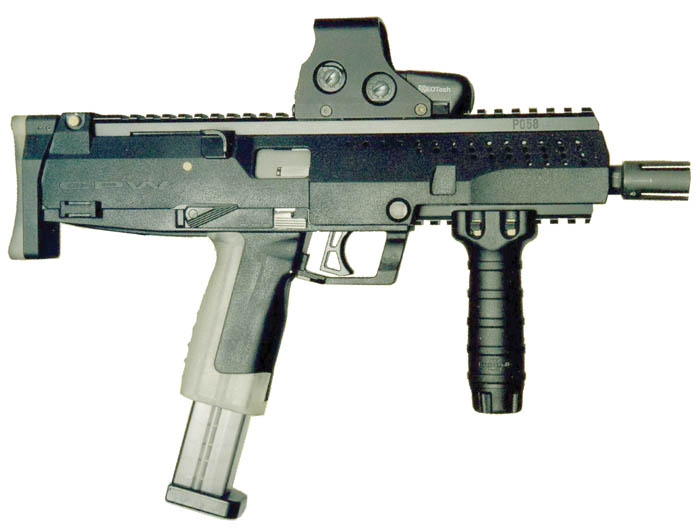
The main problem with the pistol as a military PDW can be summed up in two words: hit probability. Even on the practice range, the maximum distance at which hits are likely to be scored is a small fraction of that of a carbine. In the stress of combat, accuracy deteriorates much more rapidly than with other weapons, and it is often stated that few soldiers are hit by aimed pistol shots at ranges of more than a few feet. While well-trained Special Forces can do a lot better than this, most PDW users will have little training or practice time with these weapons.
A carbine is much easier to shoot accurately, with the far more rigid three-point support of a shoulder stock and a forward handgrip as well as the pistol grip. Sights are also easier to use. The problem with carbines as PDWs is simply their size; they are not likely to be carried on the person unless danger is known to be imminent, and are more likely to be put somewhere out of the way while the soldier performs his primary task. As attacks can come without warning, this can lead to the guns not being immediately to hand when needed. There is also the risk of an “out of sight, out of mind” attitude, leading to the gun receiving little maintenance and performing (or not) accordingly.
Bullpup designs provide a much shorter overall length than traditional carbines, but even so they are no lighter and are generally too bulky to be carried conveniently when the soldier is engaged on other tasks. Even the FN P90 bullpup, while a clever design, is no lighter than a basic M4 Carbine (5.6 lbs empty) and is much bulkier to carry than a folding-stock machine pistol like the MP7.
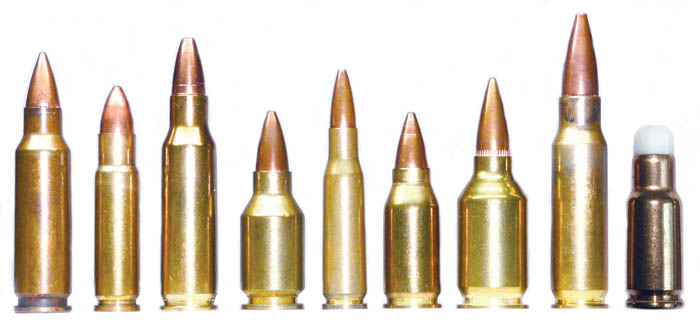
One attempted solution to this problem is the KAC PDW. The gun is smaller and lighter than the M4 Carbine, and its 6×35 ammunition (based on the 5.56mm case) is claimed to match its effectiveness out to 300 metres with significantly less muzzle blast and recoil. However, it may still be considered too big to be routinely carried on the person, and it seems unlikely that an army would want to adopt another cartridge so close in performance to the 5.56mm, especially since the ammunition is also unsuited to use in a handgun. Similar objections would apply to the 5.56×30 Colt MARS carbine of the late 1990s and the current Indian MINSAS carbine project, which also fires a 5.56×30 round.
Having discussed the disadvantages of traditional weapons, what kind of characteristics would an ideal PDW have? There will be no agreed answer to this question, so what follows is just one personal viewpoint, based on many conflicting views studied over the years.
- The PDW should be wearable, so that it is always immediately to hand when needed. This means it must be compact and light enough to be holstered (or similarly attached) without getting in the way or being a burden to the wearer. A weight of not more than 3.5 lbs (empty) seems a reasonable target.
- It should have a shoulder stock and a forward handgrip to provide reasonable controllability and accuracy. The needs of compactness dictate that these should fold or telescope out of the way while the weapon is not in use; the gun must therefore be usable as a single-handed pistol in an emergency if there is no time to extend the stock and grip. In the past, some pistols have been offered with detachable stocks (which often doubled up as holsters) but these are really too cumbersome and slow to get into action, as well as not usually having a forward handgrip.
- In the interests of compactness, the gun should use ammunition short enough for the magazine to fit into a pistol grip.
- A very clear and easy-to use sight should be standard, preferably a red-dot zero-magnification holographic type.
- The ammunition should be reasonably effective against both unprotected targets and those wearing (at least) soft body armor, but it isn’t realistic to expect a PDW round to match the performance of rifle ammunition. The effective range probably doesn’t need to be more than 100 yards or so.
- Finally, it would be useful for selective fire to be available for its suppressive effect when caught in an ambush.
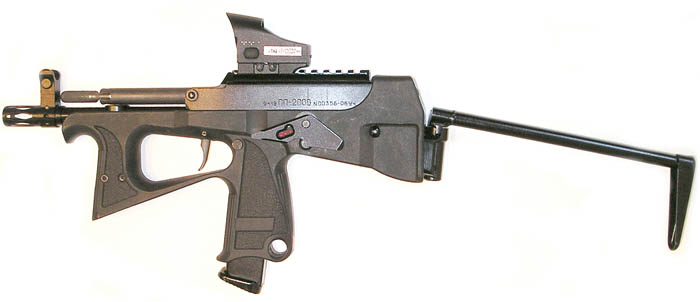
What is described here is clearly one of the modern breed of compact, lightweight SMGs or machine pistols. There are several types available, but the key issue is ammunition choice. Which is best suited to this role; traditional pistol ammunition or one of the new small-caliber high-velocity rounds like the 5.7mm and 4.6mm?
There is only one small-caliber gun in production which meets the above requirements: the HK MP7. There is a slightly wider choice of compact 9mm weapons, the most notable ones being the Swiss Brugger & Thomet MP9 (developed from the Steyr TMP – Tactical Machine Pistol), which is a little smaller and lighter than the MP7 at 3.1 lbs rather than 3.3, and the new STK CPW (Compact Personal Weapon) from Singapore. Russian firms have also introduced some machine pistols in this caliber recently, most notably the very compact PP-2000.
There is no doubt that the small-caliber rounds will penetrate more armor than traditional pistol ammunition, have a longer accurate range, are smaller and lighter so more rounds can be carried, and generate less recoil making them more controllable in automatic fire. These are all important plus points. However, against unprotected targets they seem likely to suffer from the same erratic effectiveness that afflicts the 5.56mm rifle round, only more so.
On the other hand, the effectiveness of the 9mm ball ammunition has also been questioned by US forces, with various attempts being made in recent years to open up competitions to replace the 9mm M9 with a .40 or .45 caliber pistol (the US Coast Guard has already adopted pistols in .40 S&W). Despite the criticisms of the 9mm, it may not be quite dead yet, and 9mm guns have scope for upgrading their armor penetration.
First, there are steel-cored armor piercing rounds for the 9mm which will get through soft body armor. If more penetration is needed the Russian approach is worth studying; they have recently adopted the 9×19 as their standard PDW round to replace the old 9×18 Makarov, with a composite AP bullet that holds together against soft targets but separates on hitting armor, the steel core penetrating alone. A high velocity is needed to achieve the penetration, which means that the bullets are light and will therefore lose velocity quickly, but they should be good enough for the required 100 yards. Two different loadings have been developed: the 7N21 (80-grain bullet at 1,510 fps) and the high-pressure 7N31 (65-grains at 1,970 fps). For those needing a longer effective range, a 9×21 round on similar principles is also in Russian service; the 7N29 loading fires a 104-grain bullet at 1,345 fps and is claimed to defeat armor consisting of two 1.2mm titanium plates and 30 layers of Kevlar at 50 meters.
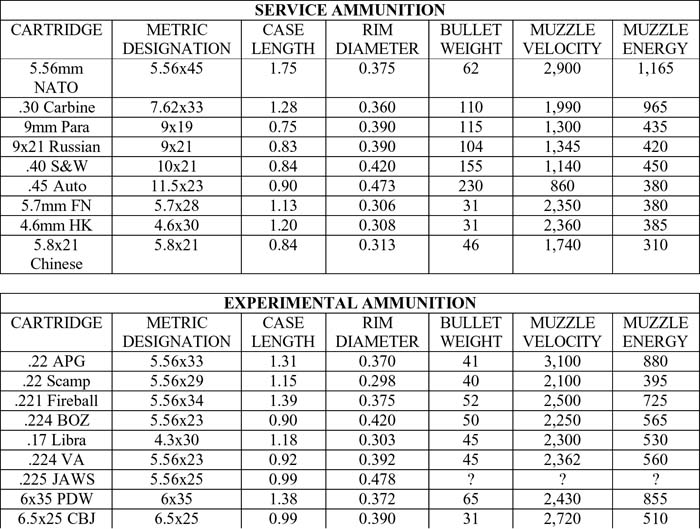
Finally, it is possible, just by changing barrels, to switch from 9×19 to the experimental 6.5×25 CBJ, which in its standard loading fires a saboted tungsten alloy 4mm projectile weighing 31-grains at 2,720 fps from an eight-inch SMG barrel. This outclasses the penetration of the 5.7mm and 4.6mm PDW rounds (and even the 5.56mm M855) and has an effective range of 400 meters, but clearly its performance against unprotected targets is questionable although the spoon-tipped bullet variant should enhance tumbling.
The main drawback of the 9mm compared with the 4.6mm is its heavier recoil and the effect of that on controllability in automatic fire. Whether or not this is a significant issue would have to be tested in troop trials. Guns in .40 or .45 calibers (such as the .45 KRISS Super V) could of course receive the same enhanced penetration treatment, with composite armor-piercing bullets and saboted sub-caliber rounds. The downside is that the bigger cartridges reduce the magazine capacity and generate more recoil.
Any military weapon is a trade-off between conflicting requirements, and this is more true of PDWs than most. They need to be compact, light and handy, but also to have a high hit probability in semi-skilled hands and to be effective against unprotected men as well as having the potential for penetrating some levels of body armor. There is no correct answer to this conundrum, just a range of choices with different pros and cons.
Anthony G Williams is co-editor of Jane’s Ammunition Handbook, co-author (with Maxim Popenker) of “Assault Rifle” and “Machine Gun” and maintains a website at www.quarry.nildram.co.uk
| This article first appeared in Small Arms Review V13N5 (February 2010) |






